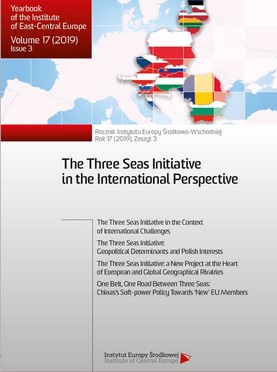One Belt, One Road Between Three Seas: China’s Soft-power Policy Towards ‘New’ EU Members
One Belt, One Road Between Three Seas: China’s Soft-power Policy Towards ‘New’ EU Members
Author(s): Bartosz Dziewiałtowski-GintowtSubject(s): Business Economy / Management, Economic policy, Environmental and Energy policy, Government/Political systems, International relations/trade, EU-Approach / EU-Accession / EU-Development, ICT Information and Communications Technologies, Transport / Logistics
Published by: Instytut Europy Środkowej
Keywords: Belt and Road Initiative; Three Seas Initiative; soft power; New Silk Road; 17+1 format;
Summary/Abstract: China’s soft-power practice in its international activity boils down to four areas: culture, education, diplomacy, and economy. The most important element of China’s soft-power policy seems to be the Belt and Road Initiative (BRI). Announced in 2013, the BRI is a complex, long-term and large-scale strategic political and economic project by the Chinese government with an infrastructure character. In this way, China is seeking to invest its capital surpluses in resurrecting the ancient Silk Road to create railroad and maritime networks with its most important trading partner – the European Union. In these circumstances, in September 2015, the presidents of Central and Eastern EU member states announced the establishment of the separate Three Seas Initiative (TSI), a political and economic project bringing together 12 EU states, including 11 ‘new’ members and Austria. These entities constitute an informal bloc of states between the Adriatic, Baltic and Black seas, though without a permanent secretariat but with rotating leadership. In addition to the lack of a formal structure, the TSI region, located mainly in the EU’s eastern part, is characterized by a weaker infrastructure network than Western Europe, lower GDP (except Austria), and high dependence on gas supplies from Russia (except Croatia). To overcome these disparities, the TSI has developed a catalogue of 48 investment priorities in three economic areas: energy, transport, and digitalisation. China’s soft-power policy towards the ‘new’ EU members may be decided by the American patronage of the TSI and the fact that one of the flagship projects is the North-South Gas Corridor, which will enable the sale of American LNG in Central Europe, which has been dependent on gas supplies from Russia, China’s partner in the BRI.
Journal: Rocznik Instytutu Europy Środkowo-Wschodniej
- Issue Year: 17/2019
- Issue No: 3
- Page Range: 93-114
- Page Count: 22
- Language: English

